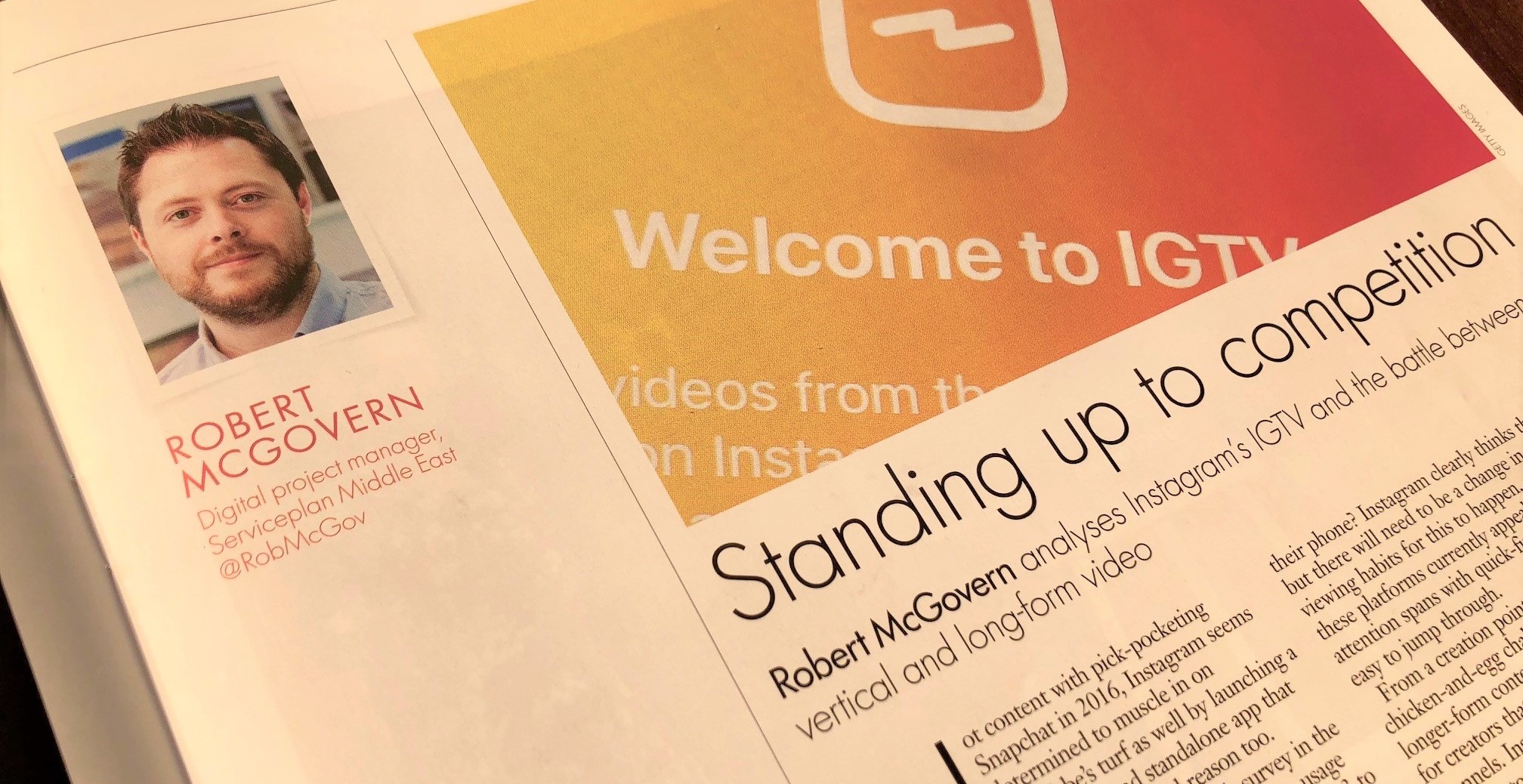Originally featured in the July 8th 2018 issue of Campaign Middle East
Not content with pick-pocketing Snapchat in 2016, Instagram seems determined to muscle in on YouTube’s turf as well by launching a video hub and standalone app that they’re calling IGTV. And for good reason too. According to a recent Pew Research survey in the US, Instagram is trailing only YouTube in usage among teens. 85 percent of Americans aged 13 to 17 say they use YouTube, with Instagram coming in second at 72 percent, and Snapchat close behind at 69 percent. While Instagram could definitely do with a better ‘home’ for its video content outside of users’ Stories or Feeds, their emphasis on catering to the longer-form video that YouTube currently dominates clashes somewhat with their insistence on using vertical video.
The vertical format that currently features on Instagram and Snapchat lends itself well to shorter content; an impromptu piece to camera, a quick glimpse around a quirky cafe, a short makeup tutorial etc. But the type of video that typically garners a following on YouTube, the kind that Instagram wants to attract to its platform, is a fundamentally different type of content altogether; longer, better structured, with a higher level of production value, and more importantly, horizontal in format.
Viewers on these ‘vertical’ platforms have been primed for brevity and, because of this, the big question for Instagram is whether users will spend as long watching vertical videos as they already do with horizontal videos. The average YouTube viewing session on mobile is an impressive 40 minutes according to Google. But for Instagram, the average mobile session duration is a mere 3.05 minutes. Instagram hopes that, by increasing the maximum time limit for its videos from 1 minute to 60 minutes, it will enable longer-form quality content to flourish and keep users on the app for longer. But will users really watch 10, 20, even 30 minute vertical videos on their phone? Instagram clearly thinks they will, but there will need to be a change in current viewing habits for this to happen, especially as these platforms currently appeal to short attention spans with quick-fire content that is easy to jump through.
From a creation point of view too, there is a chicken-and-egg challenge of trying to encourage longer-form content creation without evidence for creators that it will find an audience on these channels. Instagram must try to both convince their current top content creators to fundamentally change the type of videos they make for the longer format, while also trying to attract YouTube creators to the platform, which would in turn require them to drastically adapt their content for vertical video. For these creators, the vertical format is a restrictive one in comparison, with valuable screen real estate at the sides being sacrificed for length, and a heavy trade-off in the amount of information they can show on the screen at any one time. For YouTube content creators, this could be a serious stumbling block.
At the moment, Instagram has said that they will not show ads on the new IGTV, although this will inevitably change over time once the platform finds its feet. But by shutting off a potential revenue stream for creators at the beginning, and by not making direct payments to stars either, they could initially struggle to attract the talent that they want to come to the platform. It seems like a stretch to expect YouTube’s most popular creators to jump ship to a format that doubles their workload without cutting them in on the ad revenue. Ultimately, the old cliche is true, content is king, especially for video. Facebook has already found this out the hard way over the past couple of years by not being able to take market-share from YouTube due to a lack of exclusive quality content on the platform. Can IGTV succeed where Facebook ultimately failed? Stranger things have happened, but it’s certainly a tall order.


